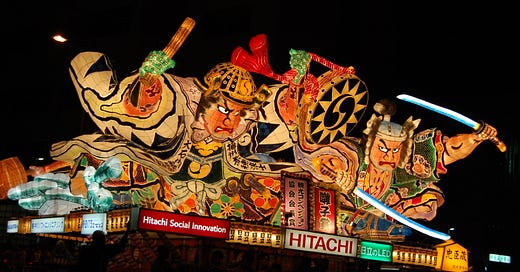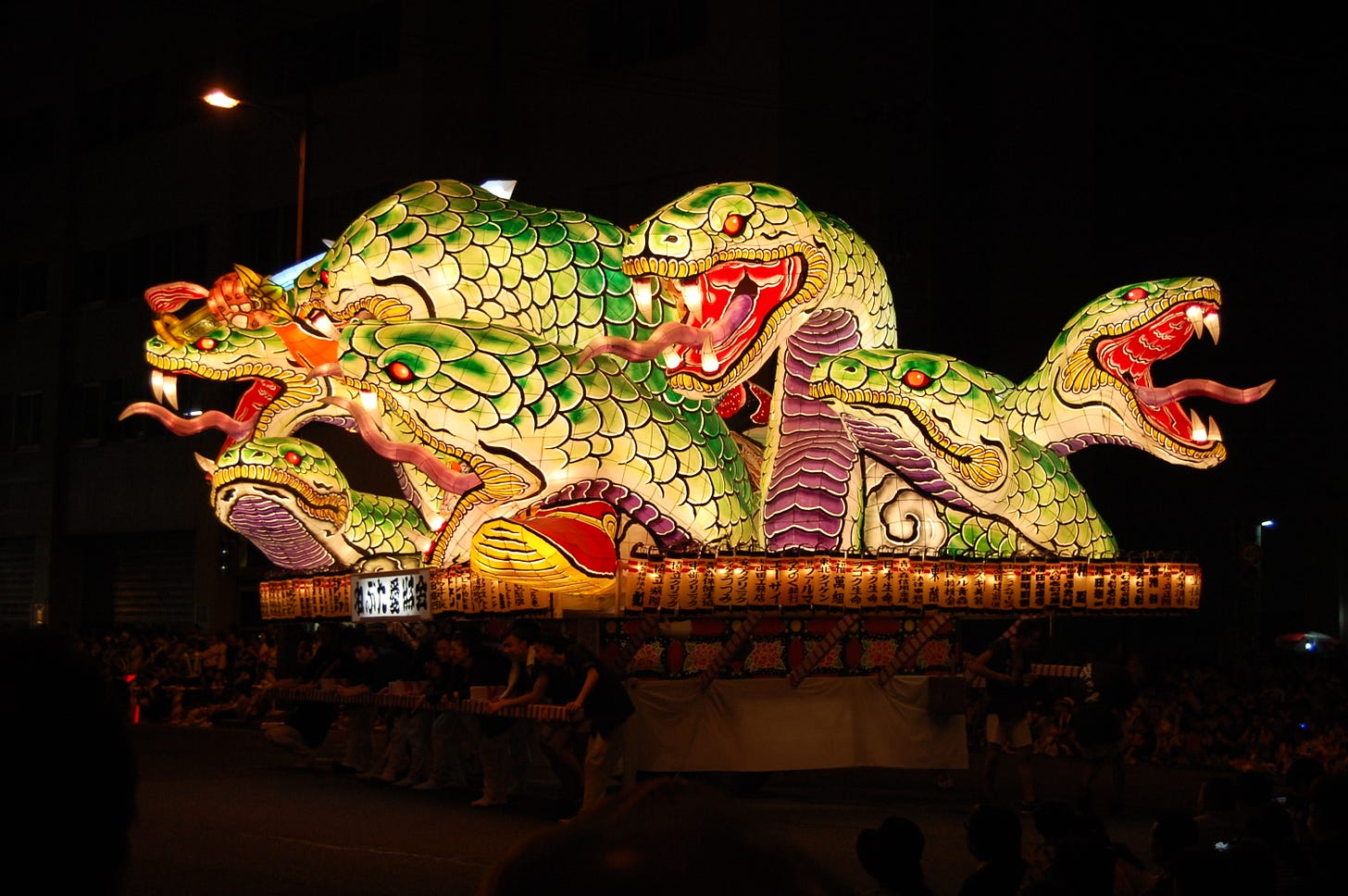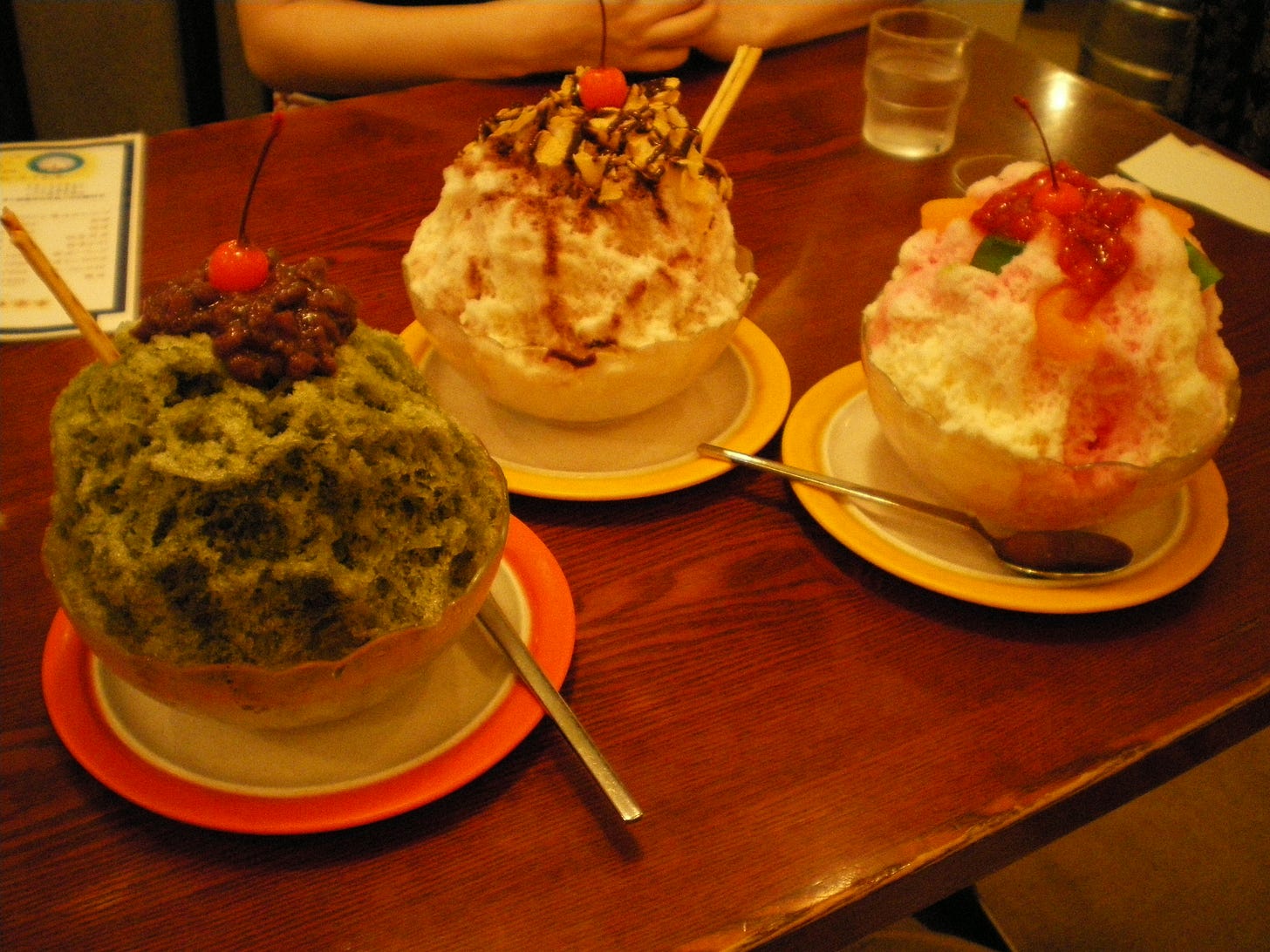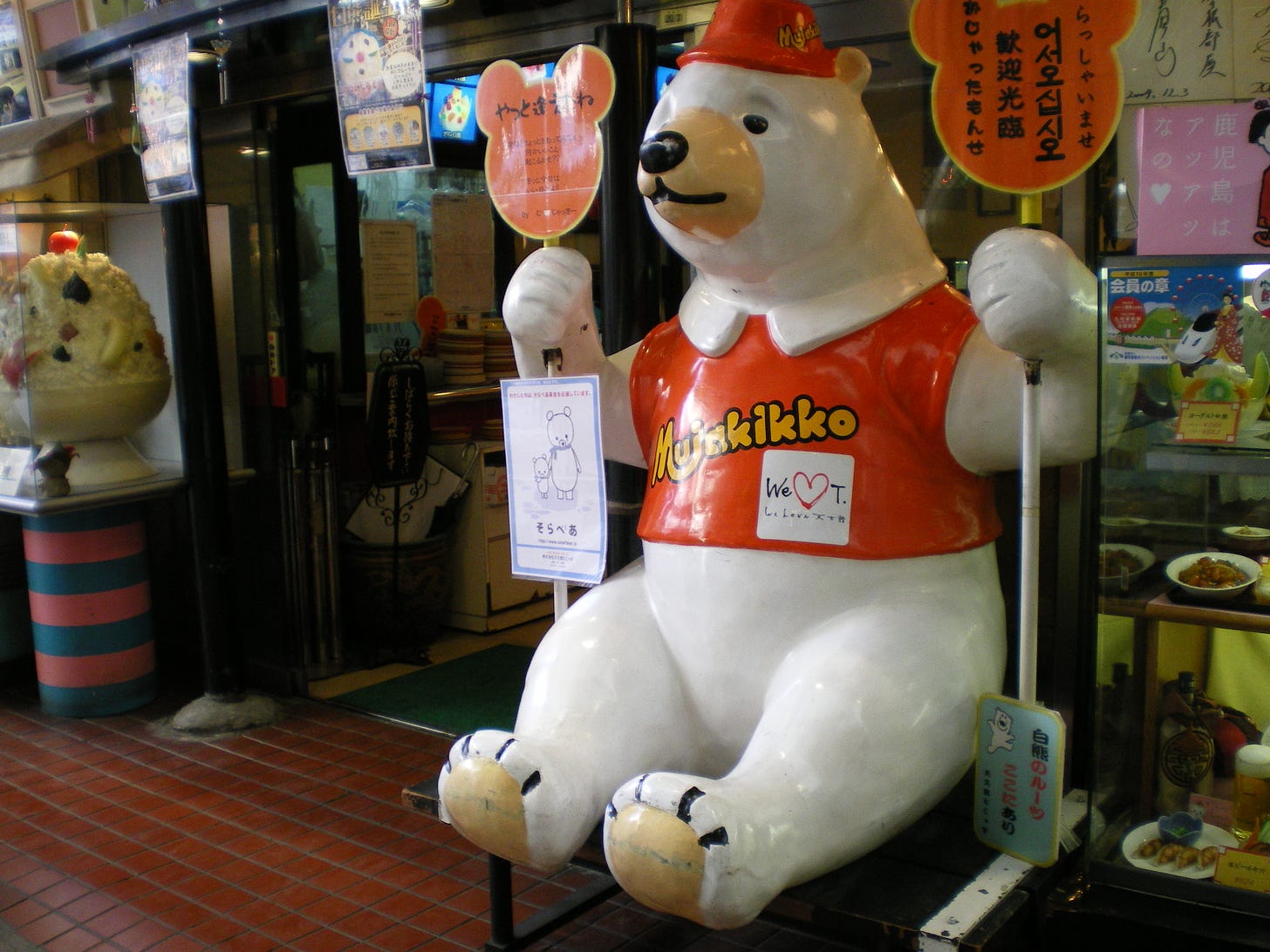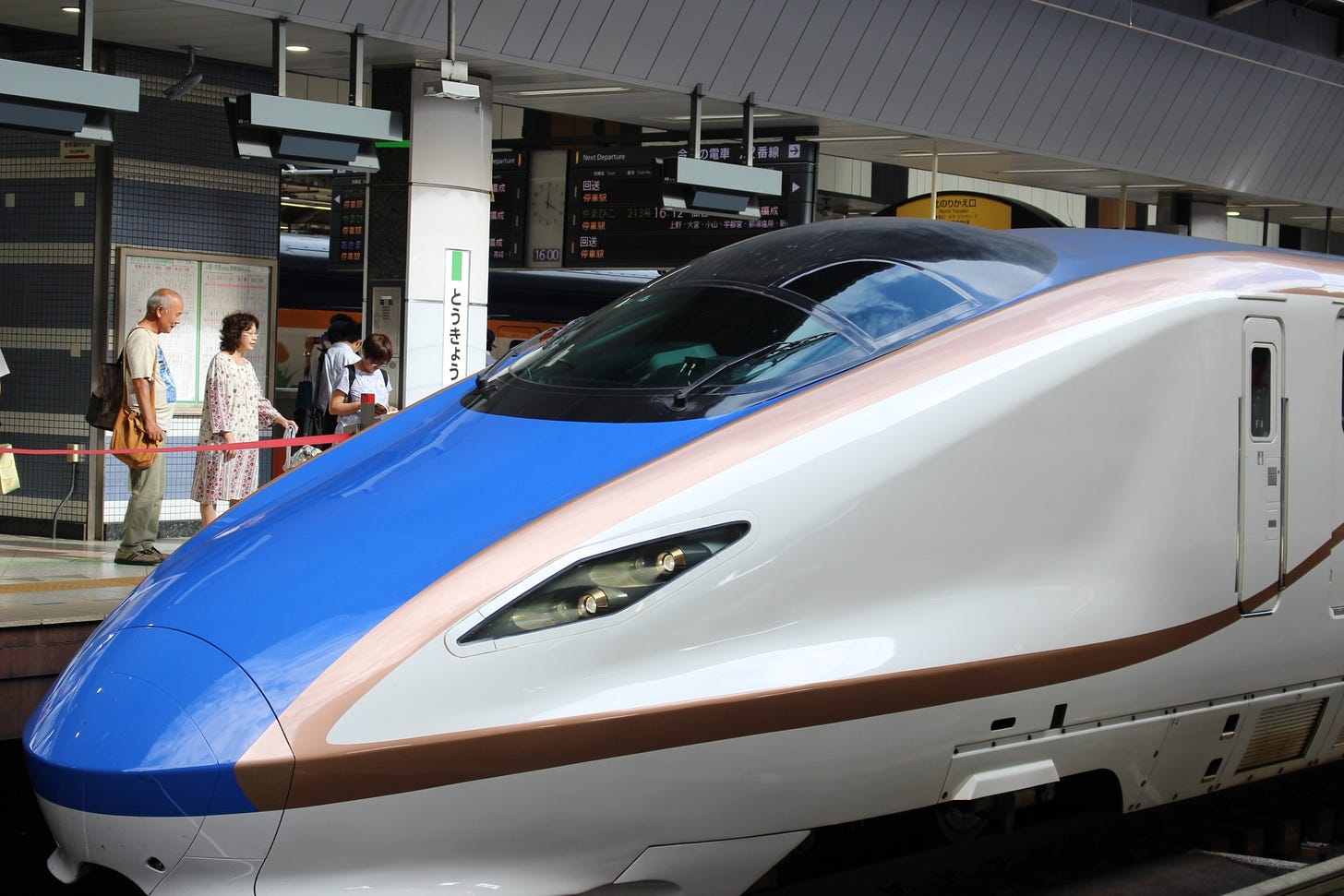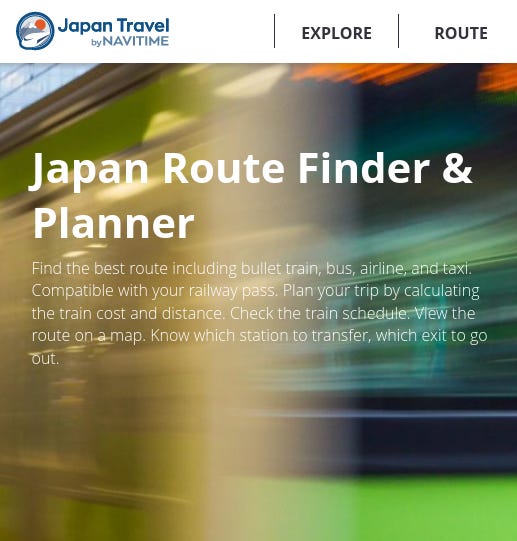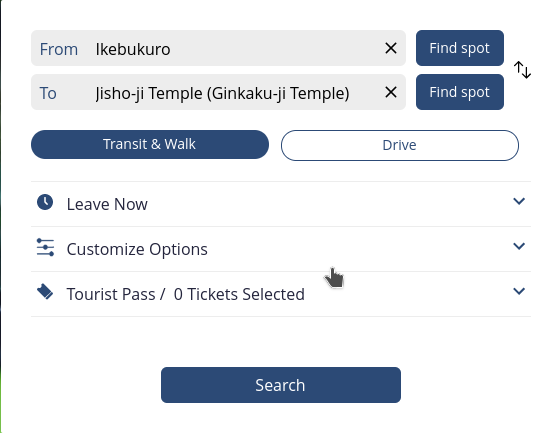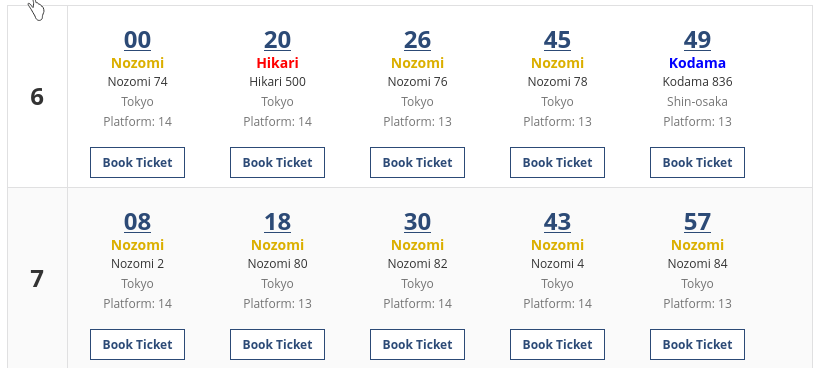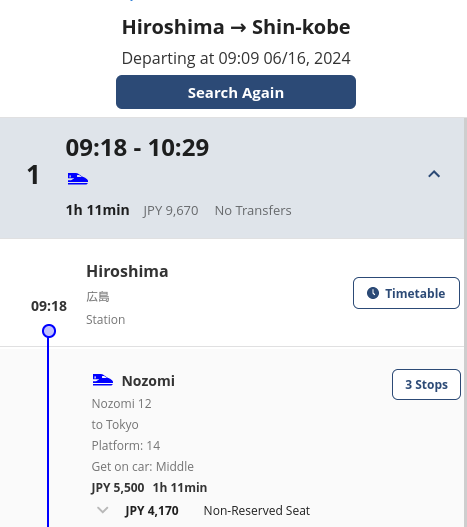Summertime Supremacy: why you shouldn't miss this season
Plus simple tips for planning train travel
Hello Insiders!
In this month’s edition:
The best of summer in Japan
An easy guide to planning train trips
Summer standouts: be here now!
Don’t like Japan’s summer weather, but you’re still going to visit in July or August? Doesn’t make sense, right? But that’s exactly what a viewer commented on a recent video.
Why? Because the most exciting events happen in summer! That viewer does have a point - which got me thinking. If I recommend any event in July and August, then it has to be worth seeing! That’s because I have a hard time with the high temperatures and humidity. So here are my picks!
Aomori Nebuta Matsuri (matsuri = festival)
Summer arguably has the most outrageously spectacular festivals. They range from the historic Gion Matsuri in Kyoto to the spectator-participation-welcome dance-fest of Tokushima Awa Odori.
But if you want to get up close and personal with the festival, for me, Aomori Nebuta Matsuri is the greatest. Unlike Kyoto’s crowded Gion Matsuri, where you’re likely to see more if you watch on TV, the floats in Aomori’s streets come close enough that you can touch them.
Nebuta are essentially giant lantern sculptures on wheels. A wire frame is built, which is then covered in washi paper. The finished sculptures depict different scenes and characters from Japanese culture, and are enormously elaborate. Such is the cost of building a float that companies sponsor nebuta artists to continue the tradition, since it takes around 1 year to create a float.
Aomori Nebuta Matsuri happens each year between August 2nd and 7th. You can see floats from the past and learn more about the festival at the Nebuta Museum, which is open most of the year. And it’s worth pointing out that nearby Hirosaki and Goshogawara also hold their own, equally amazing nebuta matsuri around the same time in August.
Fireworks Everywhere
If there’s one constant across the country in summer, it’s the fireworks festivals. Once we get into July, I often hear people asking if I’m going to the local display. These are often held at ports, along rivers, next to the sea, or in large parks, sometimes around castles.
Unlike organised events I’m used to in England, displays here are generally free to the public. And no matter where you are in the country during the summer, you can generally find an event happening nearby. Search Hanabi Walker (hanabi means fireworks) and you’ll be spoiled for choice.
One of the biggest festivals is held in Nagoaka, a few hours on the Shinkansen from Tokyo. Supposedly featuring the longest span of fireworks in the world (across 2 kilometres), it’s not difficult to see why this event gets around a million visitors each year.
Not willing to travel that far? Might I recommend the Naniwa Yodogawa Fireworks Festival in Osaka or the Sumidagawa Fireworks Festival in Tokyo. I like these local events because you get a proper sense of the whole community coming out to enjoy the summer night entertainment together.
Going to a fireworks festival is one of the easiest ways of experiencing Japan from a local’s perspective. You’ll want to arrive early to bag a decent viewing spot beside the river - and factor in more time for getting back to your hotel because of the enormous crowds. This isn’t something I normally enjoy, but with fireworks, it only seems to add fun to the experience!
And if you’re not travelling in the summer, don’t despair! Japan loves fireworks so much that it’s not hard to see them at other times of the year. Moerenuma Park in Sapporo holds one of the best fireworks displays in the country in early September (with more reasonable temperatures too). And elsewhere in Hokkaido, hotels in Lake Toya put on a free show every evening from the end of April to the end of October.
Nagaoka Fireworks Festival - Aug 2nd - 3rd every year
Naniwa Yodogawa Fireworks Festival - 3rd August 2024
Sumidagawa Fireworks Festival - 27th July 2024
Hokkaido Art Fireworks - 7th September 2024
Kakigori (shaved ice dessert)
Summer in Japan just wouldn’t be summer without eating at least one kakigori at some point. Take a mountain of ice shavings, cover it with a flavoured syrup, and feel yourself cool from the inside out as you eat. There are usually plenty of flavours to choose from - I personally enjoy the strawberry version, although many people swear by green tea. As a way of cooling down in the heat of the day, it’s hard to beat this dessert, and luckily, you can find them on sale almost everywhere during the summer, especially at festivals!
If you’re travelling in Kyushu, you should definitely check out Kagoshima’s regional variation - shirokuma. This puts the shaved ice with a flavouring of sweetened condensed milk, and combines it with red bean paste and chunks of fruit on top. The name shirokuma means “polar bear” - which is why you’ll find them featured at shops in the city.
(Find that) train like a pro
Whether it’s your first or fifth trip to Japan, knowing how to navigate the railways can be particularly nerve wracking. This month I want to share my best pro-tips on searching train times and routes.
Route planning
At the moment the best all-round planning tool is the blandly-named “Japan Travel” offered by Navitime. A lot of people actually just call it Navitime. Compared to other tools, it has a very clean interface and handily shows you the route on a map. It also has lots of extra features that Google Maps doesn’t, and tends to give more sensible route information, more of the time.
Links to apps
Search by station or attraction
If you know the closest station to your destination, great! But if you have no idea, just put in the attraction you want to visit and press “find spot”. This is incredibly handy when you need to take a connecting bus, because finding the names of stops can be tough.
Scan the timetable
After you do a search, a “timetable” button will appear next to your departure station, meaning you can quickly get an idea of what other timings will work for you. This can be especially useful if you want to see how late you can leave a place to get back to your hotel.
Checking the fare
The total ticket price is displayed in results next to the journey time. So this trip between Hiroshima and Shin-Kobe costs 9,670 yen. You can also see 2 other prices (5,500 and 4,170 yen) which refer to the costs of the individual parts of the ticket. You don’t need to worry about these figures - just that big one at the top.
Trip Essentials
Everything you need in one place - get ready and support my work at the same time!
Basics: eSIM / Sim Card / Pocket Wifi / VPN / Travel Insurance
Youtube: Get ready for Japan playlist
Transport: JR Pass / Regional Passes / Shinkansen Tickets / Car rental
That’s all for this month! See ya!
Andrew
*There are some affiliate links in this email: I will earn a small commission if you buy something, and it costs you nothing. Cheers!

